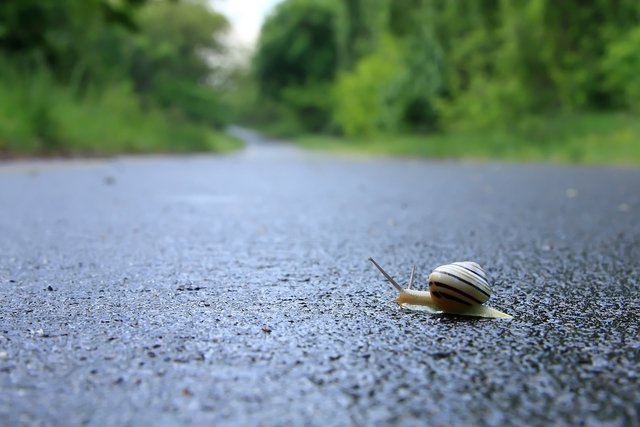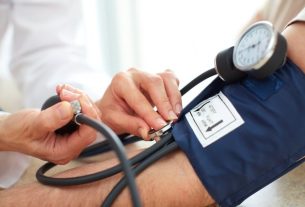Schistosomiasis is a parasitic disease caused by Schistosoma mansoni, which can be found in river and lake water and whose intermediate host is the snail. This parasite can penetrate the skin and cause symptoms in people such as redness and itching in the area, weakness and muscle pain.
Schistosomiasis, also known as schistosis, water belly or snail disease, is more common in tropical environments where there is no basic sanitation and where there are a large number of snails.
It is important that schistosomiasis is diagnosed at the first symptom, as this means it is possible to start treatment with antiparasitics to eliminate the infectious agent and increase the chances of curing the disease.
See more about schistosomiasis in the following video:
Main symptoms
The main symptoms of schistosomiasis are:
- Redness and itching at the site of the parasite’s entry;
- Muscle pain;
- Fever;
- Weakness;
- Loss of appetite;
- Diarrhea or constipation;
- Nausea and vomiting;
- Abdominal pain and discomfort;
- Belly swelling, also called water belly;
- Presence of blood in the stool, in some cases.
In most cases, schistosomiasis is asymptomatic. However, as the parasite spreads, it is possible to notice the appearance of symptoms. Furthermore, when it affects the liver circulation, also called portal circulation, more serious symptoms can be noticed, such as changes in heartbeat, enlargement and hardening of the liver and enlargement of the spleen.
How to confirm the diagnosis
The diagnosis of schistosomiasis must be made by a gastroenterologist, infectious disease specialist or general practitioner, initially by evaluating the signs and symptoms presented by the person, as well as evaluating lifestyle habits.
To confirm the diagnosis, a 3-day parasitological fecal examination is recommended, in which eggs of Schistosoma mansoni. In addition, a blood count and measurement of liver enzymes, such as ALT and AST, which are normally altered, may be requested, as well as imaging tests, such as abdominal ultrasound, for example, with the aim of verifying the increase and functioning of the liver. liver and spleen.
Make an appointment with your nearest doctor for a more detailed assessment of your symptoms:
Taking care of your health has never been easier!
How transmission happens
The infection by Schistosoma mansoni It happens from contact with contaminated water, especially in places where there are large numbers of snails. Therefore, farmers, fishermen, women and children are more vulnerable to contracting this disease after fishing, washing clothes or bathing in polluted waters.
Therefore, in places where there is no basic sanitation, it is common for several people from the same community to be infected with schistosomiasis, especially if the region has a large number of snails, as this animal plays a fundamental role in the parasite’s life cycle.
life cycle of Schistosoma mansoni
In general, the life cycle of Schistosoma mansoniit happens as follows:
- The eggs of Schistosoma mansoni are released in the feces of infected people;
- The eggs, upon reaching the water, hatch and release the miracidia, which is one of the first forms of the Schistosoma mansoni, which is attracted to snails;
- Upon reaching the snails, the miracidia lose some of their structures and develop to the cercariae stage, being released again into the water;
- The Cercariae that are released into the water are able to penetrate people’s skin and then lose some of their structures, transforming into schistosomula, and reach the blood circulation;
- Schistosomula migrate to the portal circulation of the liver, where they undergo maturation until adulthood;
- Adult worms, male and female, migrate to the intestine, where eggs are laid by the females;
- The eggs take about 1 week to mature;
- The mature egg is then released in the feces and, when in contact with water, hatches, giving rise to a new cycle.
To break this cycle and prevent other people from becoming contaminated, you must avoid contact with polluted water and eliminate excess snails.
How the treatment is carried out
Schistosomiasis treatment must be carried out under the guidance of a doctor and is normally carried out through the use of antiparasitic medications, such as Praziquantel or Oxamniquine for 1 or 2 days, which kill and eliminate the parasite.
In addition, the doctor may recommend the use of corticosteroid ointments to relieve itchy skin and analgesic medications to lower fever and relieve abdominal discomfort. It is also important to rest and increase fluid consumption.
In people who develop the chronic phase of schistosomiasis, beta-blockers and medications can also be used to control diarrhea, in addition to sclerotherapy for esophageal varices being recommended.
Is schistosomiasis curable?
Schistosomiasis can be cured when the diagnosis is made at the initial stage of the disease and treatment is started as early as possible, as this makes it possible to eliminate the parasite and avoid the emergence of complications, such as enlarged liver and spleen, anemia and delay. in child development, for example. Therefore, if you suspect that a person has worms, you should start taking medication as soon as possible.
To find out whether the person has really been cured, the doctor may request that a new stool test be carried out in the 6th and 12th weeks after starting treatment. In some cases, to avoid doubt, the doctor requests a rectal biopsy 6 months after starting treatment.
However, even if schistosomiasis is cured, the person does not acquire immunity and may be infected again by the parasite if they come into contact with contaminated water.
How to avoid being contaminated
Preventing schistosomiasis can be done through basic hygiene measures such as:
- Avoid contact with rainwater and floods;
- Do not walk barefoot on the street, on land or in freshwater streams;
- Drink only potable, filtered or boiled water.
These precautions must be taken mainly in places where there is no adequate sanitation and sewage runs in the open.

Sign up for our newsletter and stay up to date with exclusive news
that can transform your routine!
Warning: Undefined array key "title" in /home/storelat/public_html/wp-content/plugins/link-whisper-premium/templates/frontend/related-posts.php on line 12
Warning: Undefined array key "title_tag" in /home/storelat/public_html/wp-content/plugins/link-whisper-premium/templates/frontend/related-posts.php on line 13




